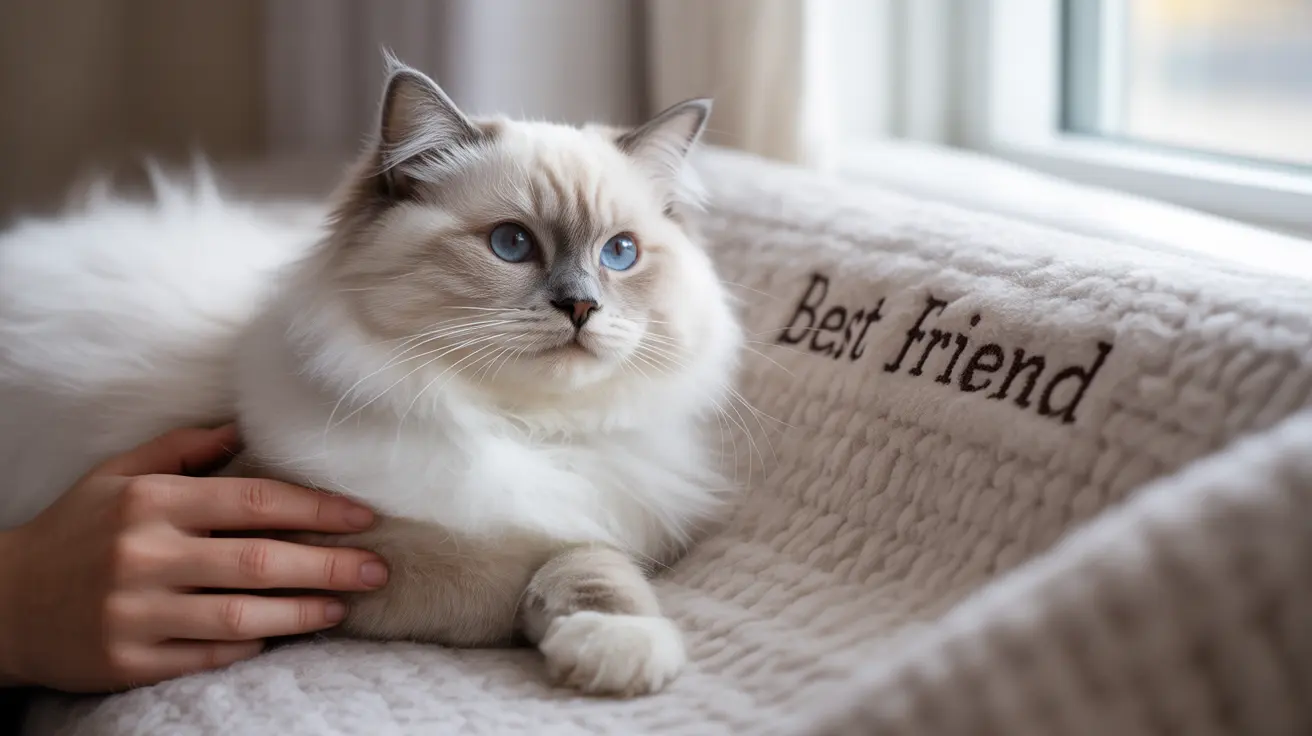Want to transform your independent feline into a snuggly companion? While cats are known for their autonomous nature, you can encourage more cuddle time by understanding feline behavior and using proven techniques. This comprehensive guide will show you how to create the perfect environment and build trust that leads to more affectionate interactions with your cat.
Every cat has a unique personality and comfort level with physical affection. Success in encouraging cuddles comes from respecting these individual preferences while consistently creating positive associations with close contact. Let's explore the expert-backed methods that can help strengthen your bond and increase those precious cuddle moments.
Understanding Your Cat's Cuddle Comfort Zone
Cats communicate their readiness for affection through subtle body language cues. Look for relaxed postures, soft eyes, and gentle purring as invitations for interaction. When your cat displays a loosely curved tail and forward-facing ears, they're typically open to engagement.
Pay attention to these positive signals:
- Slow blinking or "cat kisses"
- Head bunting against your hand or face
- Relaxed whiskers and ears
- Kneading behavior ("making biscuits")
- Following you around the house
Creating the Perfect Cuddle Environment
Set the stage for successful snuggle sessions by establishing a calm, inviting atmosphere. Place soft blankets or beds in areas where you spend time, making it easy for your cat to join you comfortably. Consider using pheromone diffusers to create a relaxing environment that encourages closeness.
The Power of Positive Association
Build trust and encourage cuddles through positive reinforcement:
- Offer treats when your cat approaches voluntarily
- Keep favorite toys nearby during quiet times
- Speak softly and move slowly during interactions
- Combine gentle petting with treats or praise
- Never force physical contact
Timing Is Everything
Choose optimal moments for cuddle attempts:
- After meals when cats are naturally relaxed
- During quiet evening hours
- Following playtime when energy is spent
- When your cat is already showing signs of affection
- During their regular rest periods
Building Trust Over Time
Patience is crucial when developing a cuddlier relationship with your cat. Start with brief moments of contact and gradually increase duration as your cat becomes more comfortable. Always let your cat set the pace and respect when they need space.
Common Cuddle Mistakes to Avoid
Steer clear of these common errors that can hinder progress:
- Forcing physical contact
- Ignoring stress signals
- Picking up an unwilling cat
- Making sudden movements or loud noises
- Interrupting their sleep or quiet time
Frequently Asked Questions
How can I encourage my cat to cuddle with me without forcing interaction?
Allow your cat to approach you naturally. Create inviting spaces nearby using comfortable bedding, and reward their voluntary approaches with treats and gentle praise. Never chase or grab your cat for cuddles.
What are the signs that my cat feels comfortable and ready for cuddling?
Look for relaxed body language including slow blinks, forward-facing ears, and a gently curved tail. Purring, kneading, and seeking proximity are also positive indicators of comfort and readiness for interaction.
When is the best time to cuddle my cat for a positive experience?
The most successful cuddle times are typically after meals, during quiet evening hours, or following playtime when your cat is naturally calm and content. Watch for moments when your cat is already showing affectionate behavior.
How can treats and rewards help my cat become more affectionate and cuddly?
Use treats to create positive associations with physical contact. Offer rewards when your cat chooses to be near you, gradually building up to treating during gentle petting and eventually longer cuddle sessions.
What body language should I watch for to know if my cat wants to stop cuddling?
Stop cuddling if you notice tail twitching, ear flattening, skin rippling, or attempts to move away. Other signs include growling, hissing, or tensing of the body. Always respect these signals to maintain trust.
Conclusion
Remember that building a cuddly relationship with your cat takes time, patience, and respect for their individual personality. By following these guidelines and remaining consistent in your positive approach, you can create more opportunities for meaningful physical affection with your feline friend. Focus on creating trust and comfort, and the cuddles will naturally follow.






